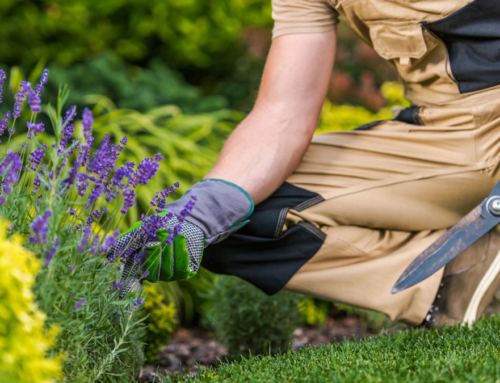HOW TO COMPANION PLANT YOUR GARDEN

Did you know that plants have relationships with each other? Plants need good companions to thrive in your garden. Inside each plant community, certain plants can compete with one another for nutrients or sunlight. However, if planted correctly, companion planting can help reduce pests, promote better overall growth, attract beneficial bugs, provide shade, improve the soil health and fertility, and suppress weed growth.
According to the Farmer’s Almanac, companion planting is when two plants are grown close together for the benefit of one or both those plants. One commonly known example of companion planting is the three sister’s trio, used in Native American communities. They planted corn, climbing beans, and winter squash together. The corn offers a stalk for the climbing beans to grow up, the low growing squash provides shade on the ground to keep the ground moisturized, and the fast-growing beans make nitrogen available for all the plants to use.
Here are some of the most popular companion planting combinations for your garden.
Basil
Basil repels certain insect pests such as thrips and have also been shown to disorient the moths which lay tomato hornworms. Researchers also found that interplanting tomatoes with basil resulted in less egg-laying by armyworms. Basil also attracts bees, which improves pollination, tomato health, and flavor.
Dill
Dill creates a habitat for ladybugs. Their larva prey on small garden pests such as aphids and spider mites.
Garlic
Garlic and garlic spray will add a scent that deters many insects, including aphids, onion flies, ermine moths, and Japanese Beetles. Place garlic plants between rows of potatoes, alongside lettuce, and near fruit trees to best utilize their protective scent.
Mint
Mint keeps away aphids, ants, and flea beetles.
Nasturtiums
Nasturtiums attract certain pests like caterpillars and blackflies – keeping them away from your other crops.
Parsley
Parsley attracts beneficial insects that will protect and pollinate your tomato plants. Plant this between rows of tomatoes.
Sage
Sage repels carrot flies and will keep your cabbage safe from cabbage moths.
Sunflowers
Sunflowers are helpful if you’re growing cucumbers or pole beans, as they will provide support for climbing plants, along with shade for other crops that easily become sun-stressed.
Tansy
Tansy is a real draw to pest-eating bugs, such as lady bugs or ladybirds, and predatory wasps. It will also repel cutworms (who attach to asparagus, beans, cabbage, carrot, celery, corn, lettuce, pea, pepper, potato, and tomato plants).
Ready to start gardening? Find your plants and flowers at your local nursery or farmer’s market and contact us if you have questions or concerns!
Some content for this article was adapted from the Farmer’s Almanac.






